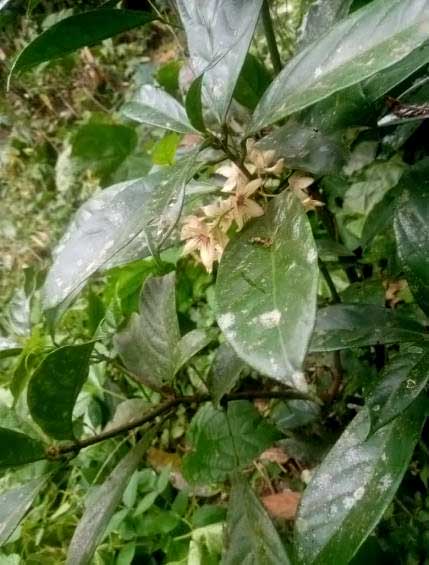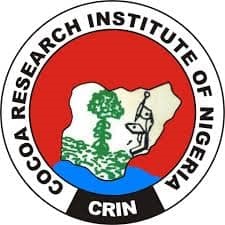Cola, a tropical African genus that belongs to the Sterculiaceae family Cola nitida and Cola acuminata are the two major cultivated species in Nigeria and indeed most other kola farms in Africa and beyond. These, in addition to many uncultivated species are of great importance for their economic, pharmaceutical, confectionery, nutritional, socio-cultural and other uses. The genus is of enormous economic and scientific importance. However CRIN’s kola germplasm, which should be the reservoir of useful genetic resources for the improvement of the crop has a very narrow genetic base. It is important to underscore the fact that the centre of diversity of C. nitida is in the West African kola belt, while the putative centre of origin of C. acuminata is Ijare, Ondo State, Nigeria. Hence the burden of research and improvement of the crop rests squarely on the shoulders of African and indeed Nigerian scientists. Painfully, it is worthy of note that international funding is currently unavailable for research and development efforts on the species. This precarious situation places the species at a great disadvantage and has significantly hampered development procedures on the crop as compared with other crops that have international recognition.
Justifications for delibarate concerted improvement efforts on the kola crop stem from the fact that the CRIN recently realised an urgent need to assemble new kola germplasm for proper expansion and characterisation of its germplasm so as to develop improved kola genotypes which possess sufficient desirable traits. This is based on the fact that the existing germplasm has a very narrow genetic base, it is largely uncharacterised and is composed of very old trees. The existing germplasm is unsuitable to solve the problems identified in kola production, which are self and cross incompatibilities and inefficient pollination, regarded as responsible for low yield. There is also the need to reduce the gestation of the crop, which is unbearably long. The progeny (seedling) of C. nitida takes 6 to 7 years to produce its first fruit and many trees remain unproductive for up to 15 years and sometimes throughout life. Solving these problems will encourage further farmer interest in the crop. Gestation in C. acuminata is much longer! Many kola farmers have therefore adopted other crops as their source of livelihood. This poses a great threat to the livelihood of many rural dwellers whose main occupation revolves around kola nut production and trading. There is at present, a grave danger with respect to the future of this crop. If the current generation of kola farmers retires it is not certain that the younger generations will take over from them.
 With very lean provision of funding, CRIN scientists therefore set out on the crucial mission of rescuing the situation, beginning in the year 2014 with a number of explorative visits to several kola producing locations primarily in South-West Nigeria, with the basic objectives of: i) Identifying superior Cola genotypes in specific farmers’ plots; ii) Collecting clones and seeds of such good performing kola genotypes from farmers’ plots and raise such in the nursery for eventual field planting; iii) Establishing the collected genotypes as new plant introduction in CRIN’s kola Germplasm plots at CRIN headquarters and sub-stations so as to expand the genetic base of the institute’s kola Germplasm. The length of the juvenile phase in the species will also be shortened by this procedure; iv) Characterizing the Germplasm using morphological and molecular markers so as to determine their genetic profile; and v) Selecting superior parents from the collections for the development of improved kola varieties
With very lean provision of funding, CRIN scientists therefore set out on the crucial mission of rescuing the situation, beginning in the year 2014 with a number of explorative visits to several kola producing locations primarily in South-West Nigeria, with the basic objectives of: i) Identifying superior Cola genotypes in specific farmers’ plots; ii) Collecting clones and seeds of such good performing kola genotypes from farmers’ plots and raise such in the nursery for eventual field planting; iii) Establishing the collected genotypes as new plant introduction in CRIN’s kola Germplasm plots at CRIN headquarters and sub-stations so as to expand the genetic base of the institute’s kola Germplasm. The length of the juvenile phase in the species will also be shortened by this procedure; iv) Characterizing the Germplasm using morphological and molecular markers so as to determine their genetic profile; and v) Selecting superior parents from the collections for the development of improved kola varieties
Sequel to this initial exploration by the kola research team, several germplasm collection exercises did not yield the desired fruit of a an early successful field clonal planting, apart from some seedlings. Seedlings clearly are not expected to fruit early, in addition to the fact that they will not be true to type. This resulted in a continued repetition of the attempts, with different modification each passing year, until finally, the first set of clones were successfuloly established in the year 2019. This success enabled the adoption of improved cloning procedures, which has resulted in further successful field establishment of more clonal accessions in the subsequent years.
It is therefore very encouraging to report now that in the current year (2023), a significant population of the Cola nitida (clonal materials and seedlings) in the new germplasm plot at CRIN Headquarters in Ibadan, Nigeria have started flowering and fruiting at exactly four years of field planting. Fruit production has also been observed specifically on many of the clonal materials etablished in 2019 (four years in the field). Successful fruit production from these individuals hints at a possible solution to self-incompatibility, which is one of the research problems to be solved in kola improvement. This fruit production recorded also indicates a high probability of early fruiting especially from all the clonal materials existing in the field. The stage is now being set for further diversity studies, a precursor for selection and hybridisation. Kudos to the Executive Director (ED) CRIN, Dr. Patrick Adebola and his dynamic Management team for the continuous support which has eventually birthed this breakthrough. Also important to acknowledge in this feat are all the past and present Kola Programme Leaders, as well as Drs. O.O. Adenuga (the leading Plant Breeder) and S. Adebiyi (the leading Extensionist), the pair who refused to give up despite previous failures and daunting difficulties. The tireless effort of Dr Sobowale (a Plant Breeder) is acknowledged, as he later joined the team and was essential to the idea. The entire body of Kola scientists in CRIN are copiously acknowledged for the gracious support they rendered towards this end.


